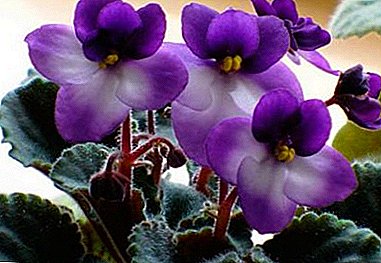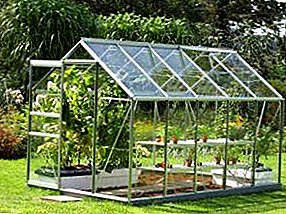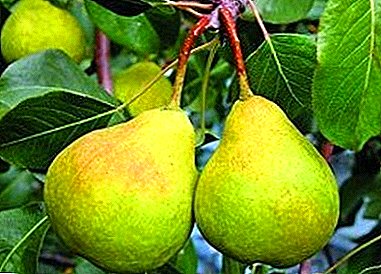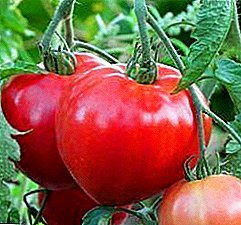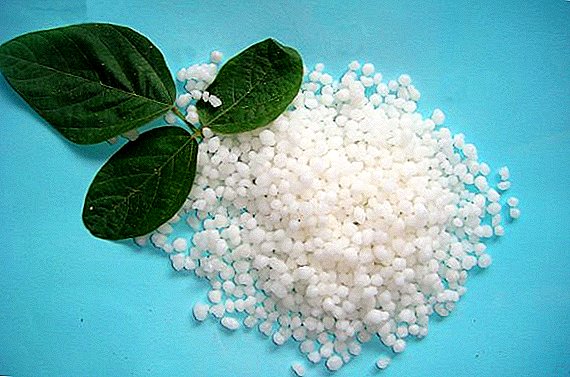 All agrarians, both experienced and novice, know about urea (carbamide). This is a versatile and highly effective fertilizer for the garden. Today we will tell: what is urea, about the rules of using it as a fertilizer, and how to deal with pesticides in the garden with urea.
All agrarians, both experienced and novice, know about urea (carbamide). This is a versatile and highly effective fertilizer for the garden. Today we will tell: what is urea, about the rules of using it as a fertilizer, and how to deal with pesticides in the garden with urea.
What is urea
Urea (urea) - nitrogen fertilizer in granules, which is widely used in horticulture and horticulture, in addition, it is inexpensive and affordable.
If you use the correct dosage of urea as a fertilizer for a particular crop, the plant will grow well, develop, and produce a lot of fruit.
 Urea in its pure form - round white or transparent granules, and exactly the fact that it is produced in granules, does not allow it to clog during transportation and storage. (NH2)2CO is the chemical formula of urea, in which almost half, namely 46% of the total, is nitrogen.
Urea in its pure form - round white or transparent granules, and exactly the fact that it is produced in granules, does not allow it to clog during transportation and storage. (NH2)2CO is the chemical formula of urea, in which almost half, namely 46% of the total, is nitrogen.
Did you know? E927b - food supplement is urea, used in the manufacture of chewing gum.Urea is dissolved in many popular solvents, including ordinary water, which makes it possible to use it both in pure form (in granules) and in the form of an aqueous solution of the desired concentration.
Important! Urea should be carefully protected from moisture during storage, as it is very moist.
Signs of nitrogen deficiency in plants
In the open-air soil, seedlings are affected by various factors, even if it was strong at the seedling stage. When there is not enough nitrogen in the soil, you will definitely see this in plants, according to certain characteristics:
- Very slow, depressed plant growth.
- Too weak, thin and short shoots of trees and shrubs.
- The leaves on the plants are small and narrow, light green (pale) in color, or even with visible yellowness. For plants that lack nitrogen, leaves may fall too early.
- The buds of flowers are underdeveloped and weak, they are much smaller than they should have been, respectively, the plant fructifying poorly.

Important! An excess of nitrogen in plants is also very harmful, it can then be converted to nitrates, and an excess of nitrogen fertilizers in the soil leads to intensive growth of plants with the formation of abundant greenery, but fructification suffers.
The use of urea as fertilizer
Urea is suitable for all terms and methods of application (during sowing, before sowing, during the growing season of plants, foliar feeding before the ovary of the fruit).
Urea is used as the main fertilizer before planting on all types of soils and for feeding vegetable, ornamental and fruit crops. It can also be used in protected ground conditions.
Interesting fact! The name of the Amkar football club from Perm is the abbreviation of two chemicals, ammonia and carbamide.
Root dressing
 Often, root treatment of plants with urea implies that it is introduced into the ground superficially, with further embedding at different depths.
Often, root treatment of plants with urea implies that it is introduced into the ground superficially, with further embedding at different depths.
Simply scattering carbamide granules during rain will not do much good.Therefore, it is best to use a local application - a pre-made urea solution for garden seedlings with a watering can is poured as close as possible to the roots.
For strawberries, cucumbers, tomatoes, cabbage, the solution is made of 20–30 g of urea per 10 liters of water, for gooseberries –10 g of urea per 10 liters of water, and for currants –20 g of urea per 10 liters of water.
The second method is also used - digging holes or small pits into which urea granules are thrown, poured over them and poured over with water. The first option is better to use in dry weather, and the second - in rainy. For fruit plants, carbamide is added according to the projection of their crowns.
Apple trees are recommended to give up to 200 g of fertilizer for each tree, and cherries and plums only to 140 g.
Important! If trees are young and still do not bear fruit, then the amount of urea should be halved, and if organic is used, at least one third.
Foliar processing
 As soon as the first ones become noticeable signs of nitrogen starvation in plants, it is imperative to carry out foliar spray treatment plants with a solution of urea using a hand sprayer in the evening or morning.
As soon as the first ones become noticeable signs of nitrogen starvation in plants, it is imperative to carry out foliar spray treatment plants with a solution of urea using a hand sprayer in the evening or morning.
If there is no sprayer, then the treatment can be done with a simple broom. A solution for fertilizing vegetables is made at the rate of 60 g of urea 10 liters of water, and for fruit crops - 30 g of urea per 10 liters of water, and this solution does not burn the leaves, which cannot be said about ammonium nitrate.
Important! If there is precipitation outside (for example, rain), then you cannot use carbamide for foliar dressings.
Urea against pests in the garden
Urea has found its use in the garden and gardening also as good helper in pest control, and if there is no desire to use different pesticides, it will be just right.
For this it is necessary to spray the plants with urea solution, the kidneys have not yet awakened, and the outside air temperature has reached + 5 ° С.
 Spraying solution done as follows: on 1 l of water - 50-70 g of urea, and a highly concentrated solution (for 1 l of water - more than 100 g of urea) should not be done so as not to burn the leaves.
Spraying solution done as follows: on 1 l of water - 50-70 g of urea, and a highly concentrated solution (for 1 l of water - more than 100 g of urea) should not be done so as not to burn the leaves.
This method will help to easily get rid of wintering pests (weevils, aphid, sucker and other).
By spraying the plants with the same solution as pest control, you can also protect them from scab, purple spot, and other infectious diseases. Just do it right in the autumnin the first days of leaf fall.


